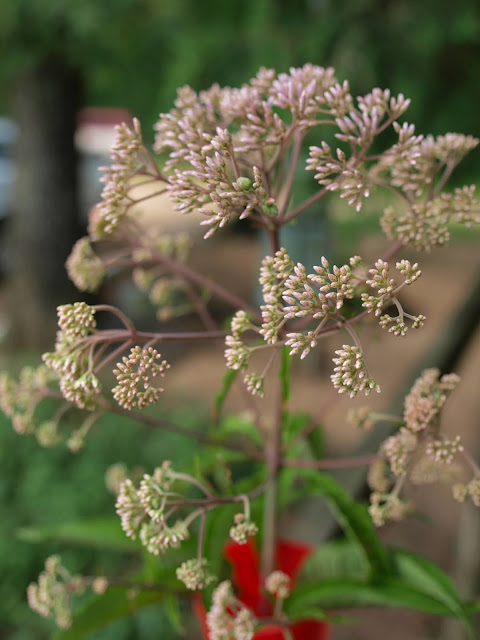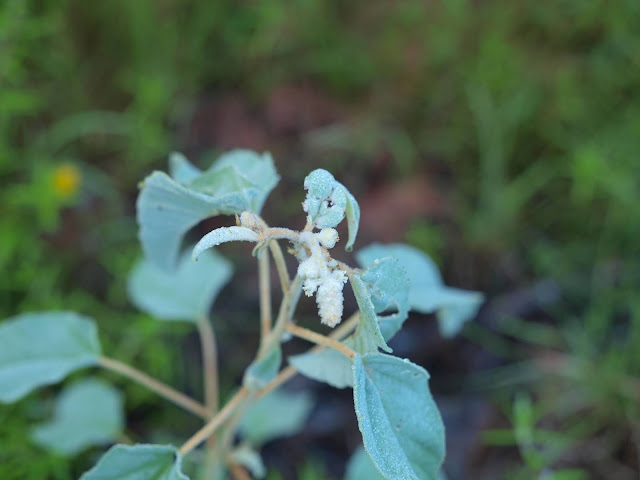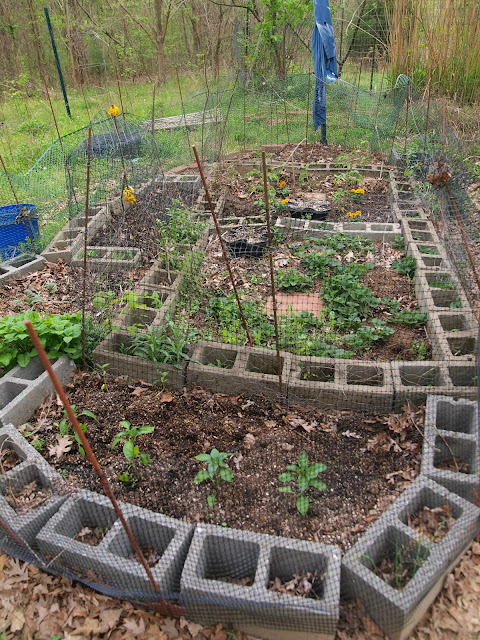Joe Pye Weed on August Fourth
Late July to August is the time to look for this beautiful plant here in West Tennessee. It is Eupatorium purpureum, or Joe-Pye Weed, and like thistles, sunflowers and daisies - it is in the Asteraceae family. This perennial has uses both as a medicinal plant, for making dyes, and as a wonderful pollinator plant.
You will see it growing in the wetter areas of the roadside, rivers, creeks and lakes. It does not like dry soil. The plants stand five or six feet tall and have many tightly clumped flower clusters that begin to bloom pink or purple. The most striking thing about this plant though is actually what it attracts - butterflies sometimes in the dozens!
Yesterday, and today - I have been thinking of where the Joe Pye Weed is. It is odd because, twice in the past right around this date, I have posted about this plant, including exactly ten years ago. August fourth is the day of Joe Pye, I guess!
There used to be two large clumps of it down on the side road near Mixie Baptist Church, but they have been mowed down by the new owners several years in a row, and now I don't even see them anymore. I miss seeing their waving heads covered in butterflies like this during this time. Yesterday I began keeping my eyes pealed for them, looking at all the roadsides between here and wherever I was going. I was looking the swampier areas - hoping to catch that glimpse of pink and/or purple.
Today, I hit the jackpot. I found a pink Joe Pye Weed near Barton's Branch stream. A little further down a side road, I found a purple one, as well! I marked the location of both of them to go back and take better pictures and check for seeds when the time is right.
A purple flowering Joe Pye Weed nearer to Brewer Creek. It was up a hill a little ways towering over my head - maybe get a better camera angle on it when I go back to check later.
An example of what the leaves and stems look like in situ.
A pink flowering Joe Pye Weed from the flatlands near Bartons Branch
A look at how the stem splits out to the flowers and leaves.
I believe the exact specimen we have growing here is Eutrochium fistulosum, because of the hollow stems and the pinkish color.
On this specimen, even the stems are a purplish color. The soil may be much more acidic? This was growing very close to the bank of the stream, compared to the other one that was in a more uphill area near a stream.
A good link for growing and identifying Joe Pye Weed, and some background history on it.
That website states that they, like the apple seeds, need to be cold stratified to do well. I have tried to purchase seed once before, and not had much success. I will definitely cold stratify the next package I buy! I've seen some in different colors, from rich red to bright purple - but I wonder how close they are to these?
It also says that the flowers have a 'vanilla' scent when crushed. On that, I beg to differ. It reminds me of a very mild variety of the scent tomatoes give off when they are threatened - that acid sharp smell that says 'stay away', but mixed with a tiny bit of something else - maybe vanilla, almost 'baby powder.' Perhaps if I get a more mature specimen the smell will be stronger and I can identify it better.









Comments
Post a Comment